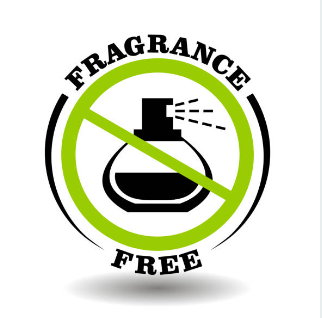In the vast and alluring world of beauty and personal care products, synthetic fragrances often play a leading role in creating delightful scents that captivate our senses. However, beneath the allure of these fragrances lie potential health risks and a lack of transparency in the industry. In this blog, we delve into the truth about synthetic fragrances, exploring the associated health concerns and the pressing need for greater transparency in the beauty and personal care industry.
Understanding Synthetic Fragrances
Synthetic fragrances have become ubiquitous in a wide array of products, from perfumes and lotions to shampoos and household cleaners. Unlike natural fragrances derived from essential oils, synthetic fragrances are chemically engineered compounds created to mimic specific scents. The allure of synthetic fragrances lies in their ability to provide a consistent and long-lasting scent profile, often at a lower cost than their natural counterparts.
Complex Formulas: Synthetic fragrances are created through intricate chemical formulations, allowing manufacturers to replicate specific scents with precision. These formulas often consist of numerous individual chemicals, each contributing to the overall fragrance profile.
Mimicking Natural Scents: The aim of synthetic fragrances is to mimic the scents found in nature. Through careful selection and combination of chemicals, these fragrances can imitate the aroma of flowers, fruits, spices, and other natural elements.
- Benefits of Synthetic Fragrances:
Consistency: One of the key advantages of synthetic fragrances is their ability to provide a consistent scent profile. Unlike natural fragrances, which may vary due to factors like climate and harvest conditions, synthetic fragrances offer a stable and predictable olfactory experience.
Long-Lasting: Synthetic fragrances often have a longer-lasting effect compared to their natural counterparts. This longevity contributes to the appeal of products that incorporate synthetic fragrances, such as perfumes that maintain their scent throughout the day.
Affordability: Synthetic fragrances are generally more cost-effective to produce than natural alternatives. This affordability allows manufacturers to create products with appealing scents at a lower cost, making them accessible to a broader consumer base.
- Versatility in Applications:
Wide Range of Products: Synthetic fragrances find applications in a diverse range of products beyond personal care, including air fresheners, candles, and cleaning products. This versatility makes them a popular choice for creating a pleasant olfactory experience in various consumer goods.
- Innovations in Fragrance Creation:
Customization: Advances in fragrance chemistry enable the customization of scents to meet specific brand preferences or consumer demands. This customization allows for the creation of unique and signature fragrances that distinguish products in the market.
Adherence to Regulations: Synthetic fragrances are subject to regulatory standards to ensure their safety for consumer use. Regulatory bodies set guidelines for the use of certain chemicals in fragrance formulations, contributing to the safety and compliance of these products.


Health Risks Associated with Synthetic Fragrances
While synthetic fragrances contribute to the allure of beauty and personal care products, it’s essential to recognize and address potential health risks associated with their use. The complex chemical compositions of synthetic fragrances may introduce several concerns, impacting both individual well-being and the environment. Here’s a detailed exploration of the health risks linked to synthetic fragrances:
- Allergies and Skin Sensitivities:
Presence of Allergens: Synthetic fragrances often contain allergens and irritants that can trigger skin sensitivities, allergic reactions, and conditions such as contact dermatitis.
Individual Sensitivity: Individuals with sensitive skin or pre-existing skin conditions may be particularly susceptible to adverse reactions, manifesting as redness, itching, or inflammation upon exposure to synthetic fragrances.
Volatile Organic Compounds (VOCs): Synthetic fragrances release volatile organic compounds (VOCs) into the air, which can be inhaled. Prolonged exposure to these VOCs has been associated with respiratory issues, especially in individuals with asthma or pre-existing respiratory conditions.
Exacerbation of Symptoms: The inhalation of VOCs may contribute to the exacerbation of respiratory symptoms, potentially leading to difficulties in breathing, coughing, or irritation of the respiratory tract.
Phthalates in Fragrances: Some synthetic fragrances contain phthalates, a group of chemicals known for their ability to disrupt the endocrine system.
Hormonal Imbalances: Phthalates have been linked to hormonal imbalances, reproductive issues, and developmental abnormalities. Concerns are particularly pronounced during vulnerable life stages such as pregnancy.
Water and Ecosystem Contamination: The production and disposal of synthetic fragrances contribute to environmental pollution. Chemicals present in these fragrances can enter water sources, affecting aquatic life and ecosystems.
Air Quality Issues: The manufacturing process of synthetic fragrances may involve the release of air pollutants, contributing to air quality issues and potential harm to both human health and the environment.
Limited Regulation: The regulatory landscape surrounding synthetic fragrances is complex, with limited requirements for disclosing specific fragrance ingredients on product labels.
Consumer Unawareness: Due to this lack of transparency, consumers may unknowingly expose themselves to potential health risks, as the term “fragrance” on product labels often conceals a multitude of undisclosed chemicals.


The Lack of Transparency
The beauty and personal care industry grapples with a significant challenge – the lack of transparency surrounding the composition of synthetic fragrances. This absence of clear information poses obstacles for consumers seeking to make informed decisions about the products they use. Here’s a detailed examination of the issues stemming from the lack of transparency:
- Inadequate Labeling Practices:
Use of Generic Terms: Manufacturers commonly use the terms “fragrance” or “parfum” on product labels to denote the presence of a scent. Unfortunately, these generic terms do not provide specific details about the individual ingredients that constitute the fragrance.
Ambiguity for Consumers: The use of such generic terms creates ambiguity for consumers, leaving them unaware of the potential allergens, irritants, or harmful chemicals present in the product.
Formulation Secrecy: Fragrance formulations are often considered trade secrets, providing manufacturers with legal protection against disclosing the specific ingredients. This protection contributes to the overall lack of transparency in the industry.
Balancing Proprietary Information and Consumer Safety: Striking a balance between protecting proprietary information and ensuring consumer safety becomes a challenge, with the current regulatory framework favoring the former.
Limited Access to Information: Due to the lack of comprehensive ingredient disclosure, consumers may be unaware of the potential health risks associated with the synthetic fragrances present in their favorite products.
Informed Decision-Making Hindered: Without access to detailed information, consumers find it challenging to make informed choices aligned with their health concerns, preferences, and ethical considerations.
Limited Regulatory Requirements: Regulatory bodies often do not mandate the disclosure of specific fragrance ingredients. This absence of stringent requirements contributes to the lack of transparency within the industry.
Global Variations in Regulations: Regulatory standards for fragrance disclosure vary globally, adding complexity and making it difficult for consumers to navigate the diverse market.
- Industry Resistance to Change:
Reluctance to Disclose Formulas: Some segments of the industry may resist disclosing fragrance formulas, viewing transparency as a potential threat to their competitive edge.
Balancing Profitability and Transparency: Striking a balance between profitability and transparency becomes a key consideration for companies, especially when disclosure might impact market positioning.


Addressing the Lack of Transparency
- Advocacy for Regulatory Changes:
Campaigning for Ingredient Disclosure: Consumers and advocacy groups can lobby for regulatory changes that mandate detailed ingredient disclosure, encouraging manufacturers to provide a complete list of fragrance components on product labels.
Voluntary Transparency Initiatives: Encouraging beauty and personal care companies to voluntarily adopt transparent practices, such as disclosing fragrance ingredients, can be a positive step toward fostering a culture of openness within the industry.
Educational Campaigns: Empowering consumers with knowledge about the lack of transparency, its implications, and how to interpret product labels can enhance their ability to make informed decisions.
- Supporting Transparent Brands:
Choosing Transparent Products: Consumers can actively support and choose products from brands that prioritize transparency. Supporting companies that voluntarily disclose fragrance ingredients can incentivize others to follow suit.
As consumers become more conscientious about the products they use, there is a growing demand for transparency within the beauty and personal care industry. Advocates for transparency argue that consumers have the right to know what ingredients are present in the products they purchase and use on their bodies.
- Ingredient Disclosure: Manufacturers should be encouraged to disclose the complete list of ingredients, including those within fragrance formulations, on product labels. This transparency empowers consumers to make informed choices based on their individual health concerns and preferences.
- Third-Party Certifications: Supporting and promoting third-party certifications, such as the Environmental Working Group’s EWG Verified program or the Certified B Corporation designation, can help consumers identify products that adhere to rigorous standards for ingredient transparency, safety, and environmental impact.
- Consumer Education: Empowering consumers with knowledge about synthetic fragrances, their potential health risks, and how to decipher product labels can enhance their ability to make informed choices. Educational campaigns and resources can play a crucial role in raising awareness and promoting a culture of transparency within the industry.
- Supporting Clean Beauty Brands: Choosing products from clean beauty brands that prioritize transparency and use natural or responsibly sourced ingredients can be a proactive step toward supporting a more transparent and health-conscious beauty industry.
For those concerned about the potential risks associated with synthetic fragrances, exploring natural alternatives can offer a safer and more transparent option. Essential oils derived from plants, flowers, and fruits provide a fragrant and natural way to add scents to beauty and personal care products without the potential health risks associated with synthetic counterparts.
Natural fragrances not only offer delightful scents but also often come with therapeutic benefits. For example, lavender essential oil is known for its calming properties, while citrus oils can uplift and energize the senses. Exploring the world of natural fragrances allows consumers to enjoy the sensory pleasures of beauty products without compromising on health and well-being.
The truth about synthetic fragrances reveals a complex landscape where allure meets potential health risks and a lack of transparency. As consumers, we have the right to know what we are putting on our bodies and the potential consequences associated with the products we use. Advocating for transparency within the beauty and personal care industry is not only a call for greater disclosure but also a step toward fostering a culture that prioritizes consumer health and well-being.
By supporting initiatives that champion ingredient transparency, educating ourselves about the potential risks of synthetic fragrances, and exploring natural alternatives, we contribute to a collective effort to reshape the beauty industry. Let us strive for a future where transparency is not just a buzzword but a fundamental principle that guides the creation and consumption of beauty and personal care products, ensuring a healthier and more informed choice for consumers.



